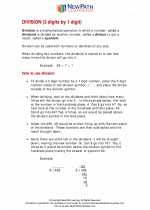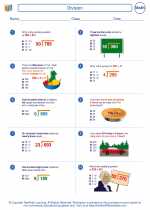Probability Rules
Probability is a measure of the likelihood that an event will occur. When dealing with probability, there are certain rules that govern how we calculate the probability of various events. These rules help us make predictions and decisions based on the likelihood of different outcomes.
Rule 1: The Probability of an Event
The probability of an event, denoted as P(A), is a number between 0 and 1 that represents the likelihood of the event occurring. A probability of 0 means the event is impossible, while a probability of 1 means the event is certain to occur.
Rule 2: Complement Rule
The complement of an event A, denoted as A', is the event that A does not occur. The probability of the complement of an event is given by P(A') = 1 - P(A).
Rule 3: Addition Rule for Mutually Exclusive Events
If A and B are mutually exclusive events (i.e., they cannot occur at the same time), then the probability of either A or B occurring is given by P(A or B) = P(A) + P(B).
Rule 4: Addition Rule for Non-Mutually Exclusive Events
If A and B are non-mutually exclusive events, then the probability of either A or B occurring is given by P(A or B) = P(A) + P(B) - P(A and B).
Rule 5: Multiplication Rule for Independent Events
If A and B are independent events (i.e., the occurrence of one event does not affect the occurrence of the other), then the probability of both A and B occurring is given by P(A and B) = P(A) * P(B).
Rule 6: Multiplication Rule for Dependent Events
If A and B are dependent events (i.e., the occurrence of one event does affect the occurrence of the other), then the probability of both A and B occurring is given by P(A and B) = P(A) * P(B|A), where P(B|A) is the conditional probability of B given that A has occurred.
Study Guide
When studying probability rules, it's important to understand the concepts and be able to apply them to various problems. Here are some key steps to help you study effectively:
- Understand the basic definitions of probability, including the probability of an event and the complement of an event.
- Practice using the complement rule to find the probability of events not occurring.
- Learn the difference between mutually exclusive and non-mutually exclusive events, and how to apply the addition rule for each type of event.
- Practice using the multiplication rule for both independent and dependent events, and understand the difference between the two.
- Work through sample problems and real-life scenarios to apply the probability rules in different contexts.
- Review and understand any formulas or equations related to probability rules.
By mastering these concepts and practicing with different types of problems, you'll be well-prepared to tackle probability questions and apply the rules effectively.
Good luck with your studies!
.◂Math Worksheets and Study Guides Sixth Grade. Division

 Worksheet/Answer key
Worksheet/Answer key
 Worksheet/Answer key
Worksheet/Answer key
 Worksheet/Answer key
Worksheet/Answer key
